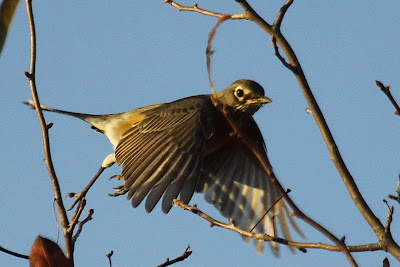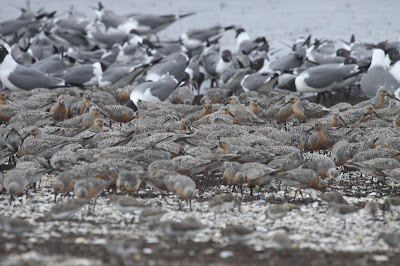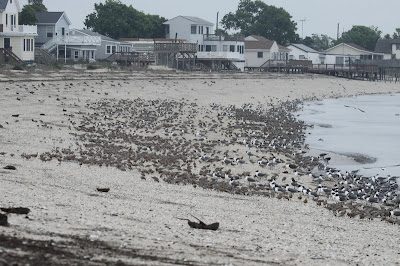 | |
| European Robin - aka Robin Redbreast - aka Robin © Whiskybottle | Dreamstime.com |
Such was the case with the “robin.” They saw a bird with a red breast, and it brought to mind the robin back in England. This robin (now officially known as the European Robin) bore a superficial resemblance to the bird they encountered in North America; the robin back home had, and still has, an orange-red face and breast.
Ornithological precision lay far in the future for the first English colonists. They tended to call anything with a red breast a robin. The Eastern Bluebird was a robin. The Eastern Towhee (formerly the Rufous-sided Towhee) carried the name “Ground Robin.” The Robin Snipe might be the Red Knot or one of the two dowitchers.
One could say that the name, “Robin,” was strewn around indiscriminately. The Baltimore Oriole was called the Golden Robin; the Cedar Waxwing was the Canadian Robin, and the Red-breasted Merganser was known as the Sea Robin.
“Robin” seems to be of French origin, a diminutive of Robert, but the English bear the responsibility for attaching the name to the bird. The European Robin began as Redbreast, then acquired the pet name, Robin Redbreast, and eventually Redbreast was dropped. This European Robin is the Robin Redbreast of the nursery rhyme:
 |
| European Robin © Rosteckm | Dreamstime.com |
Up climbed pussycat and down went he,
Down came pussycat, away Robin ran.
Says little Robin Redbreast, "Catch me if you can."
Little Robin Redbreast flew upon a wall,
Pussycat jumped after him, and almost had a fall.
Little Robin chirped and sang and what did pussy say?
Pussycat said, "Mew," and Robin flew away.
The European Robin also inspired:
Who killed Cock Robin?
I, said the Sparrow,
with my bow and arrow,
I killed Cock Robin.
In North America, the common name, “robin,” has gradually dropped away from many of its early associations. The officially sanctioned name for our robin is American Robin. This distinguishes it from other birds in the world named Robin. For example, there are tropical and Central American robins which occasionally stray into North America, especially along the Rio Grande: White-throated Robin, Rufous-backed Robin, and Clay-colored Robin.
 |
| European Robin © Johnbraid | Dreamstime.com |
The Dictionary of Word Origins attributes the origin to a document which was signed by multiple parties in a circle to make it more difficult to determine the order in which it was signed. The first round-robin document was signed on the brig, Catherine, at Gibralter in 1612.
 |
| European Robin © Stephen Inglis | Dreamstime.com |
 |
| European Robin © Nbgbgbg | Dreamstime.com |
 |
| American Robin |
The European Robin which inspired the common name for our robin belongs to the family Muscicapinae, a family of Old World Flycatchers. They are thrush-like, insect-eating flycatchers in a family that includes the nightingales and Old World chats.
In the North American thrush family, Turdidae, our American Robin shares its Genus Turdus with the Varied Thrush. Other close relatives include the Eastern Bluebird (Genus Sialia) and several of our local thrushes: Wood Thrush (Genus Hylocichia) and in Genus Catharus, Veery, Bicknell’s, Swainson”s, and Hermit Thrushes.
Our Robin may not be a robin, but it keeps good family company with the thrushes.
Note: I did not take the photographs of the European Robin; their use is licensed by Dreamstime.com.



































